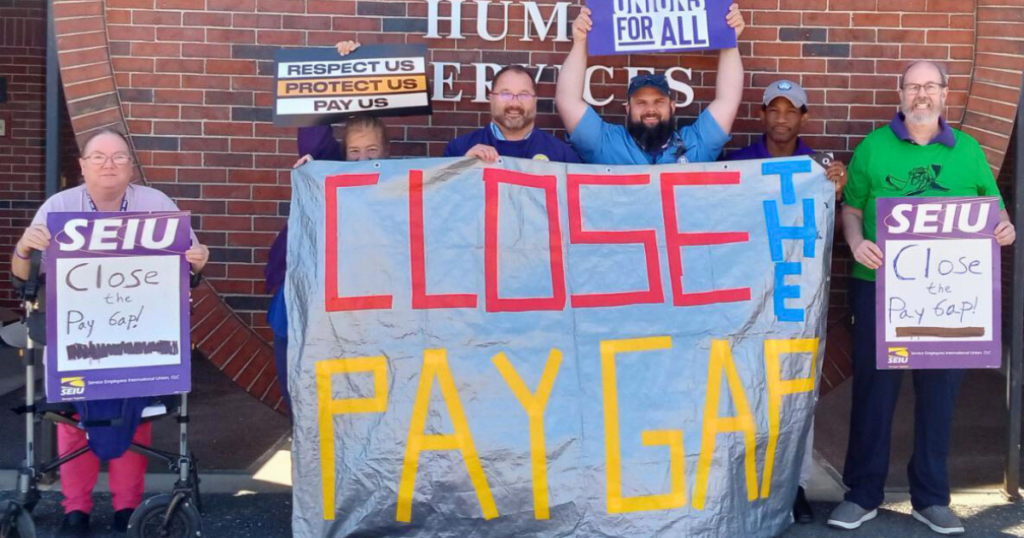Last week, the Maine Department of Administrative and Financial Services released a report outlining the progress the administration has made on closing the pay gap between state workers and their peers. In 2020, a market study report found compared to workers in equivalent positions in the private sector and other kinds of public-sector workers, state employees were underpaid by approximately 15 percent, on average. The recently released update from the Administration claims “It is time to set aside the phrase ‘pay gap,’” yet data in the report and elsewhere shows such a gap clearly persists, and may even have widened.
The “pay gap” is the difference in wages earned by state employees and the amount they could earn working similar positions in the private sector or elsewhere in other public-sector jobs outside of Maine State Government. A large pay gap makes it harder for the state to hire employees and leads to more people quitting for better pay elsewhere. Empty positions mean more work for the remaining workers and poorer delivery of services Mainers depend on, from child protection to public health nursing and the administration of safety net programs.
These consequences are widely recognized. The administration’s report notes the vacancy rate in state government is currently close to 16 percent, significantly higher than the typical 9-10 percent rate. In her recent State of the State address, Governor Mills proposed reclassifying child welfare positions, saying “to help fill these new positions, they must pay appropriately.” This statement should apply not only to child welfare positions but across state government.
The Administration argues state employees have received a number of wage and salary increases over the past few years as a result of contract negotiations, which is true. These increases will amount to a 24 percent increase in wages by July 2024 compared to January 2019. However, the key context is private sector wages have increased even more than this over the same period.
For example, the average weekly earnings of private sector wage and salary workers in Maine increased by 30 percent between the first quarter of 2019 and the same period in 2023, according to data from the Maine Department of Labor. Based on projections from the Maine Economic Forecasting Commission, that increase will be 35 percent by 2024.
This comparison holds true when examining industries which are roughly equivalent to state government work. As would be expected in the strong labor market we have seen since coming out of the pandemic, employees in the professional and business services sector will see a 41 percent increase by 2024; administrative support employees 47 percent; and health care and social assistance workers 27 percent. Each of these outstrips the 24 percent negotiated increase through 2024 for state workers.
Examining the increases in wages between Maine state employees and other public sector workers also does little to suggest a narrowing wage gap. In these cases, it is more difficult to project wages out to 2024, when the latest round of wage increases negotiated by Maine State Employees Association (MSEA) will take effect. For example, as of the first quarter of 2023, wage increases for local government workers in Maine were equivalent to the MSEA increases through July 2024 — but depending on the negotiated increases for those local government workers between 2023 and 2024, their final wage increase for the 2019-2024 period may be higher than state workers. By contrast, federal workers in Maine already saw bigger wage increases than state workers by 2023.
It is likely the wage gap between Maine state employees and their peers has grown since the last market rate study. While MSEA workers have earned significant increases in recent negotiations, these have been outpaced by many other workers, and by private sector equivalent industries in particular. Maine will not be able to deliver the quality services its residents rely on if it can’t close this pay gap and hire and retain a sufficient number of employees.
Thankfully, state lawmakers have the tools to address this issue. The State and Local Government Committee will soon consider LD 2121, “An Act to Address Chronic Understaffing of State Government Positions” from Representative Drew Gattine. Among other provisions, this bill would appropriate $165 million of the state’s current $265 million surplus to boost wages for state employees.
The state has the evidence and the funds needed to address the problem of state worker staffing and close the pay gap. Five years into the Mills Administration, the time is long past to act.


